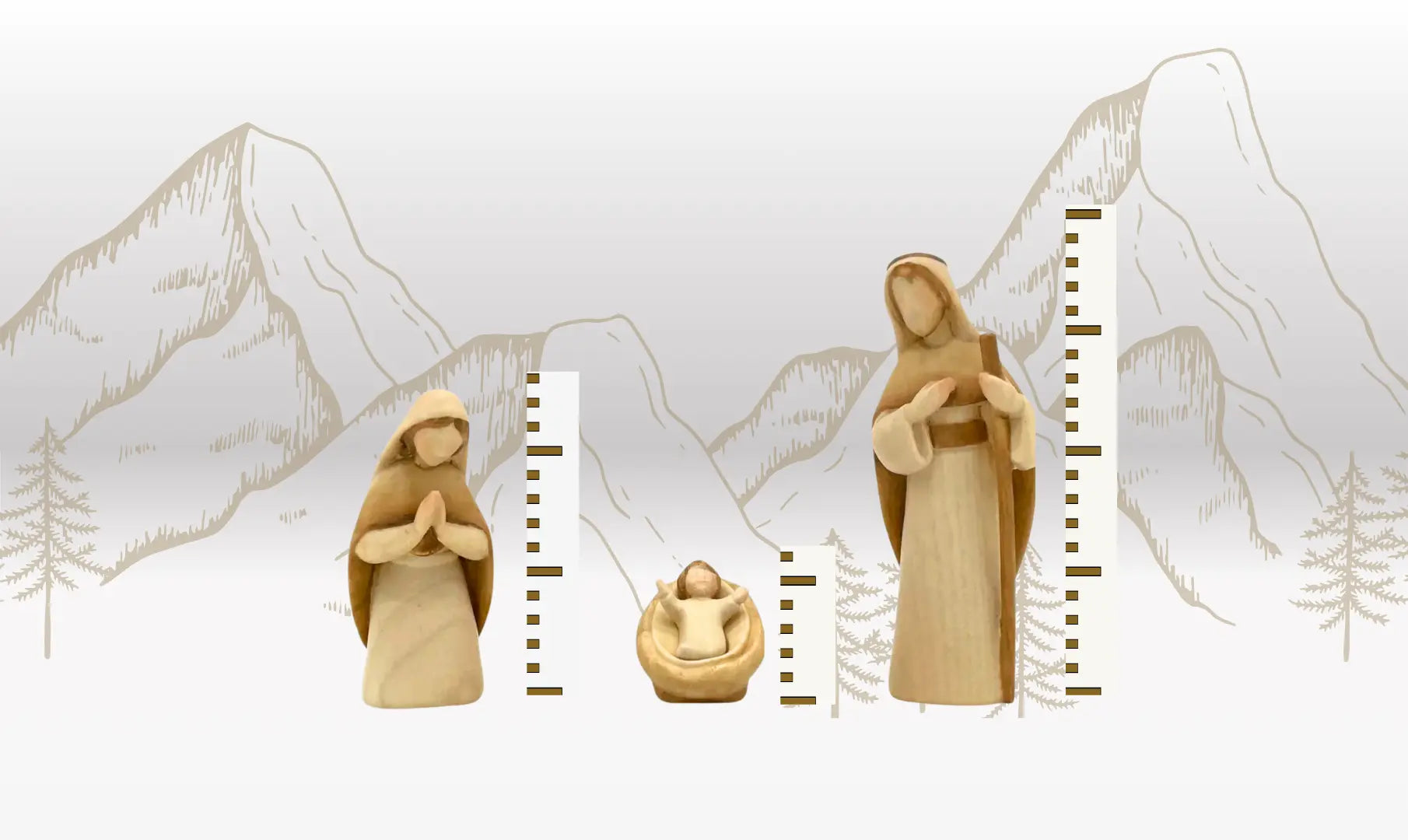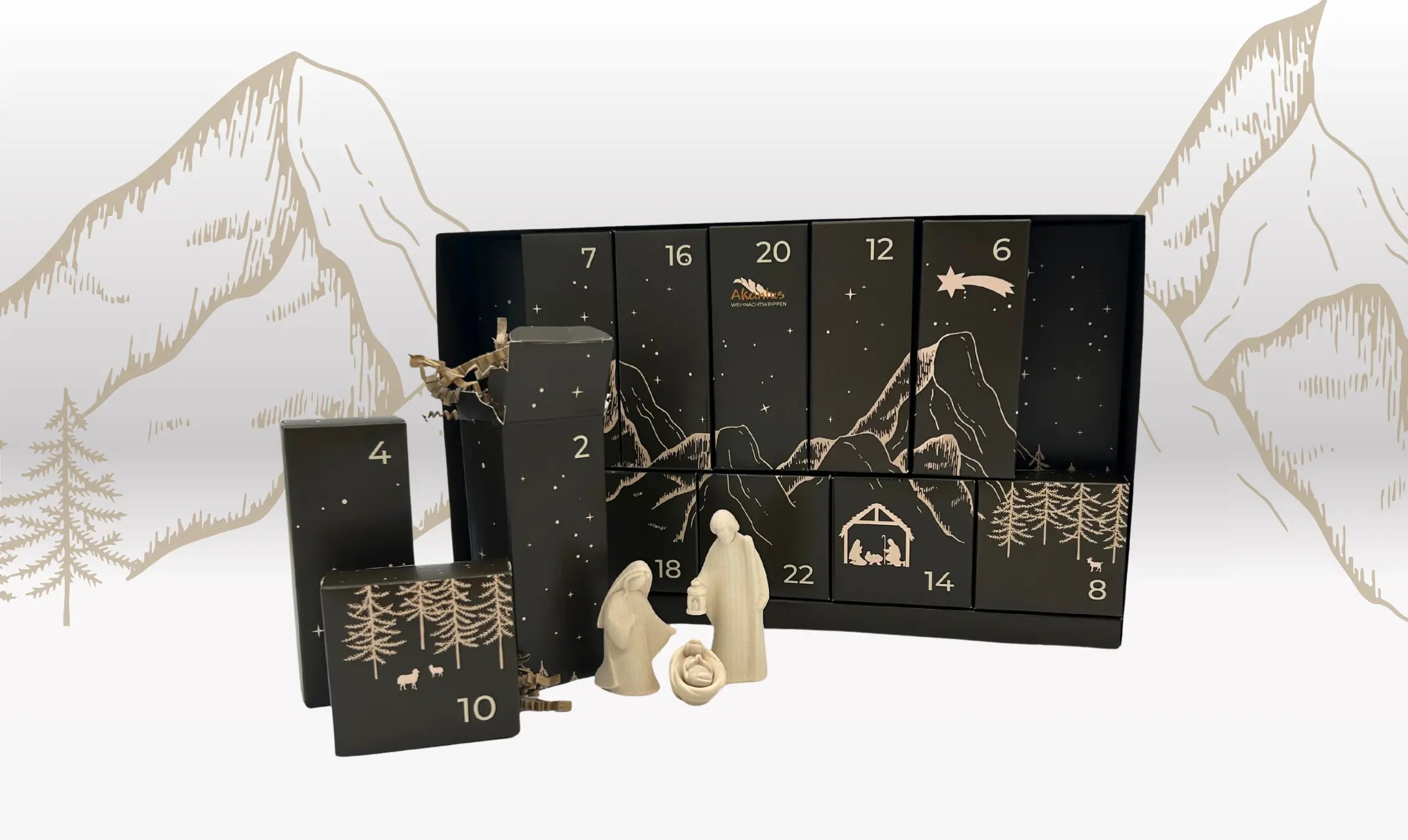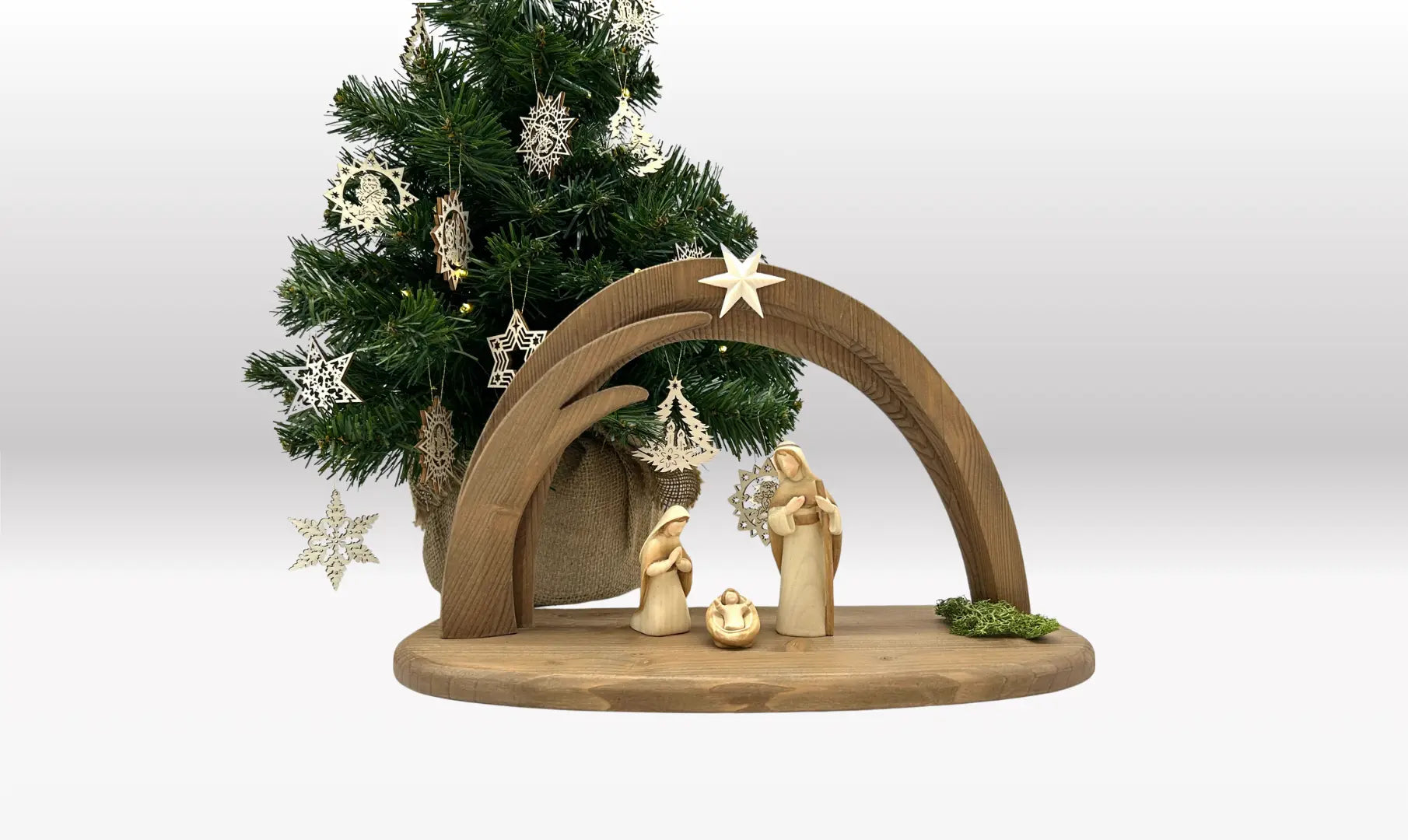
How do I know how big the nativity figures should be?
When buying nativity figures, you are often faced with the question: “Which size is the right one?” The sizes indicated on the product descriptions can be confusing, as they do not always apply equally to all figurines in a nativity set. Here we explain what you need to know to choose the right size for your nativity figures.
The specified size - what does it mean?
The specified size of a nativity scene figurine usually refers to the nativity scene series as a whole. More precisely, it represents the height of a standing main figure within this series - often St. Joseph. This specification serves as a benchmark for the other figures in the series. But what does this mean for the other figures?
Note the proportional differences in size
Within a crib series, the figures are designed proportionally to each other. This means that not all the figures are exactly the same height as the specified dimensions. Children, animals and bent persons are usually smaller than the specified size.
An example: In the case of a crib series indicated as “4 in.”, this means that the standing figure of St. Joseph is 4 in. tall. St. Mary, who is usually depicted somewhat smaller, could be around 2.7 in. tall. The shepherds, sheep or Magi are also proportionally adjusted so that they appear harmonious in the overall depiction of the nativity scene.
Why these differences are important
Playing with the differences in size gives a nativity scene depth and naturalness. A nativity scene in which all the figures were exactly the same size would appear unnatural and rigid. The proportionally matched sizes of the figures create a lively depiction that draws the viewer into the scene.
The right size for your nativity scene
Before you buy your nativity figures, you should consider how large your entire nativity scene should be and how much space you have available. A smaller crib with figures of 8-10 cm is well suited for shelves or smaller niches. Larger cribs with figures from 12 cm upwards require more space. If you already own nativity figures and would like to expand your collection, make sure that the new figures match the existing series.
The specified size - what does it mean?
The specified size of a nativity scene figurine usually refers to the nativity scene series as a whole. More precisely, it represents the height of a standing main figure within this series - often St. Joseph. This specification serves as a benchmark for the other figures in the series. But what does this mean for the other figures?
Note the proportional differences in size
Within a crib series, the figures are designed proportionally to each other. This means that not all the figures are exactly the same height as the specified dimensions. Children, animals and bent persons are usually smaller than the specified size.
An example: In the case of a crib series indicated as “4 in.”, this means that the standing figure of St. Joseph is 4 in. tall. St. Mary, who is usually depicted somewhat smaller, could be around 2.7 in. tall. The shepherds, sheep or Magi are also proportionally adjusted so that they appear harmonious in the overall depiction of the nativity scene.
Why these differences are important
Playing with the differences in size gives a nativity scene depth and naturalness. A nativity scene in which all the figures were exactly the same size would appear unnatural and rigid. The proportionally matched sizes of the figures create a lively depiction that draws the viewer into the scene.
The right size for your nativity scene
Before you buy your nativity figures, you should consider how large your entire nativity scene should be and how much space you have available. A smaller crib with figures of 8-10 cm is well suited for shelves or smaller niches. Larger cribs with figures from 12 cm upwards require more space. If you already own nativity figures and would like to expand your collection, make sure that the new figures match the existing series.


